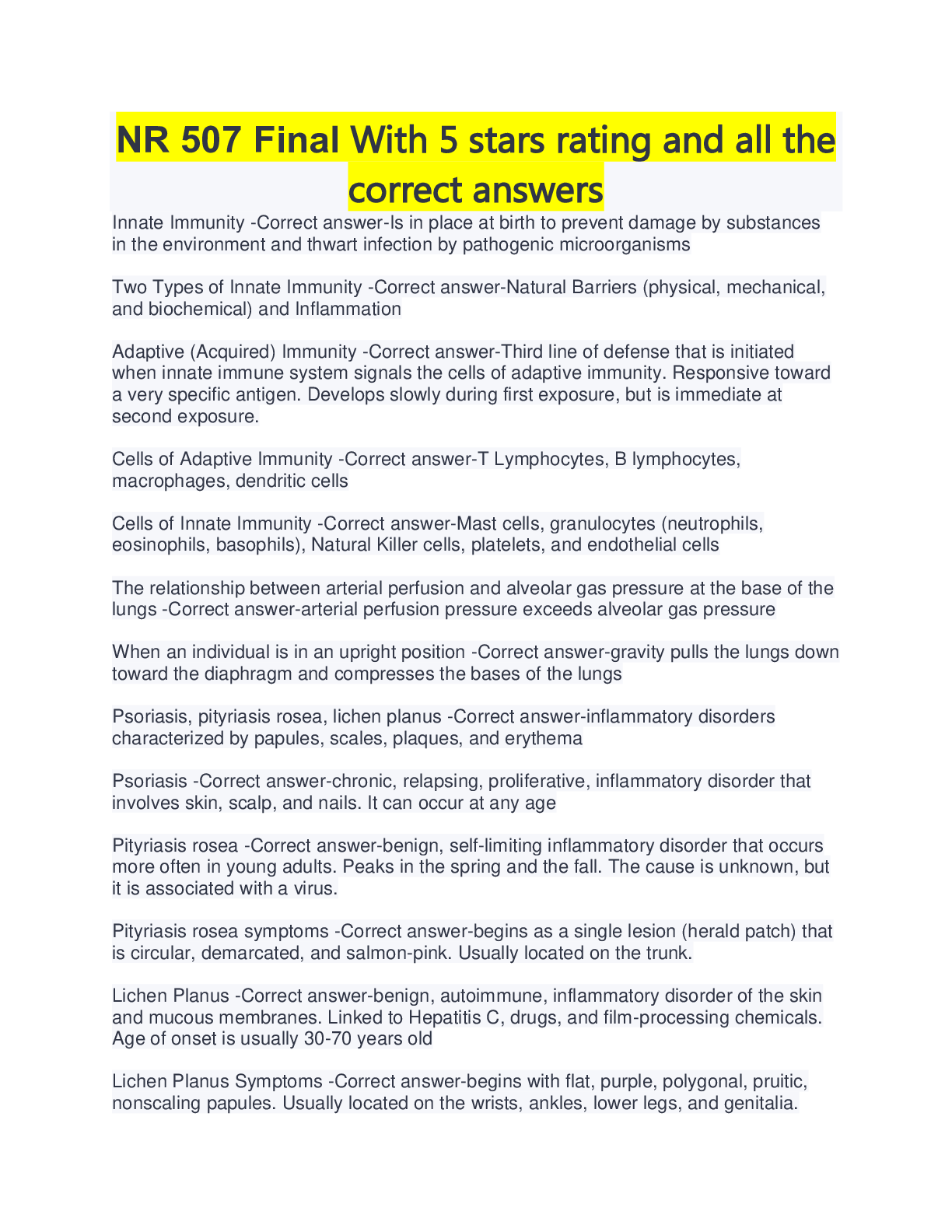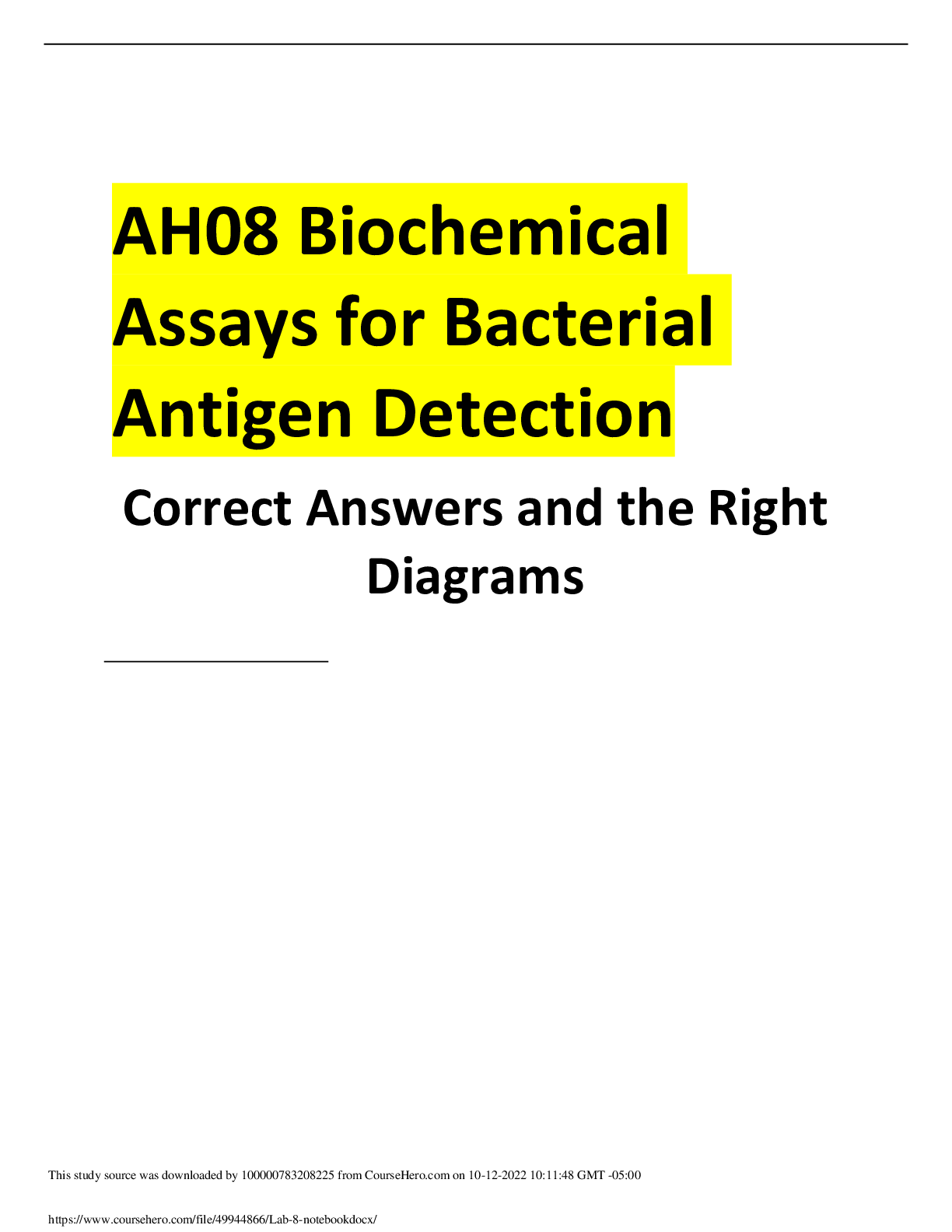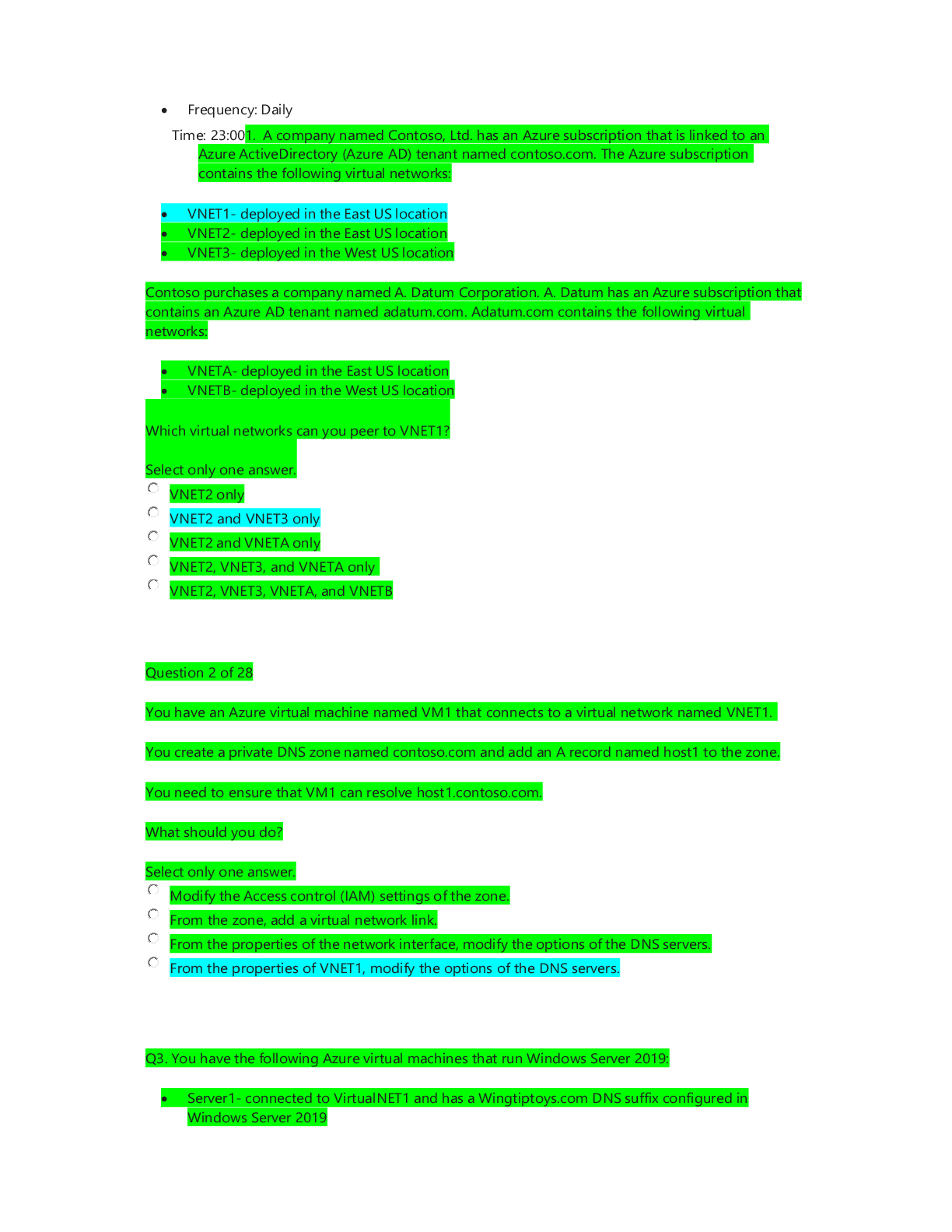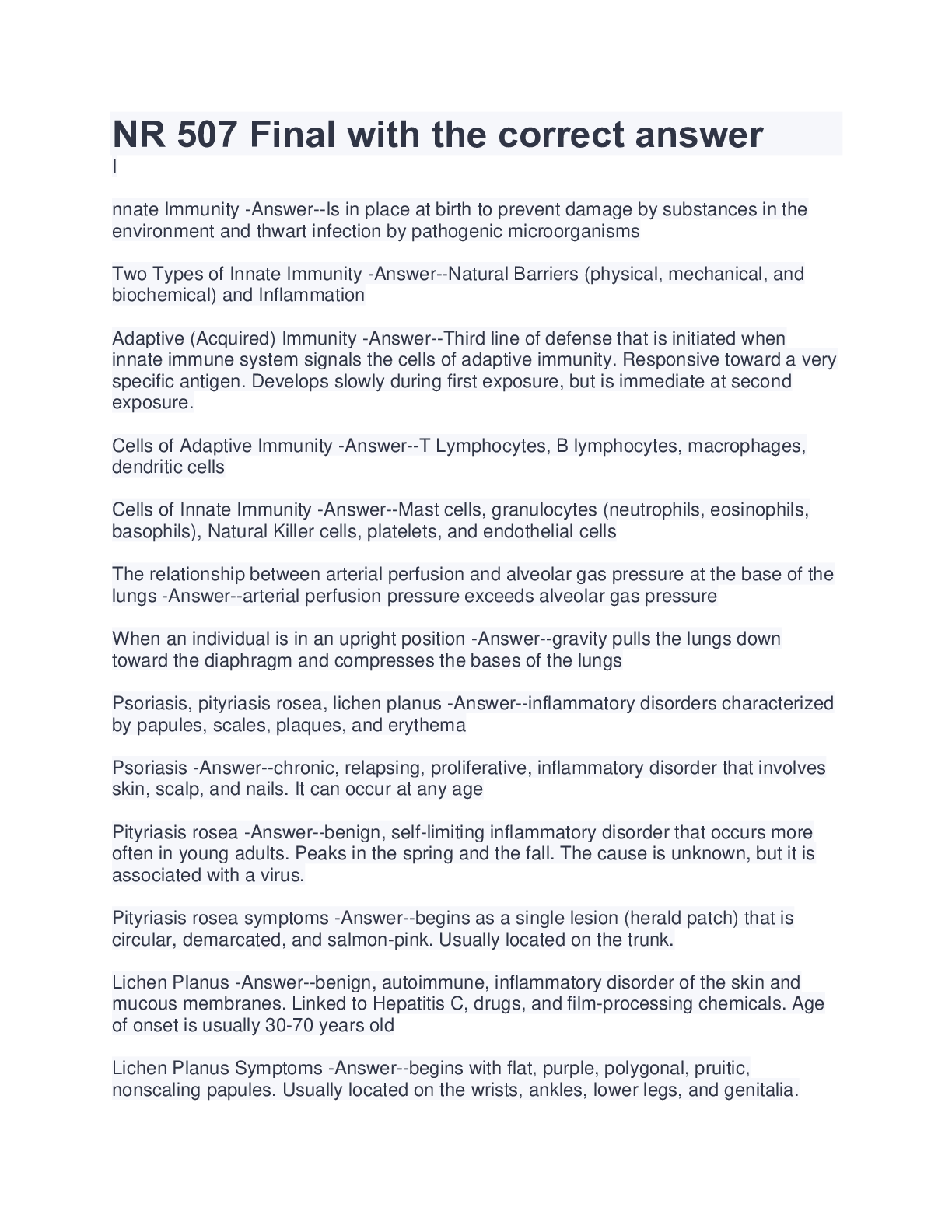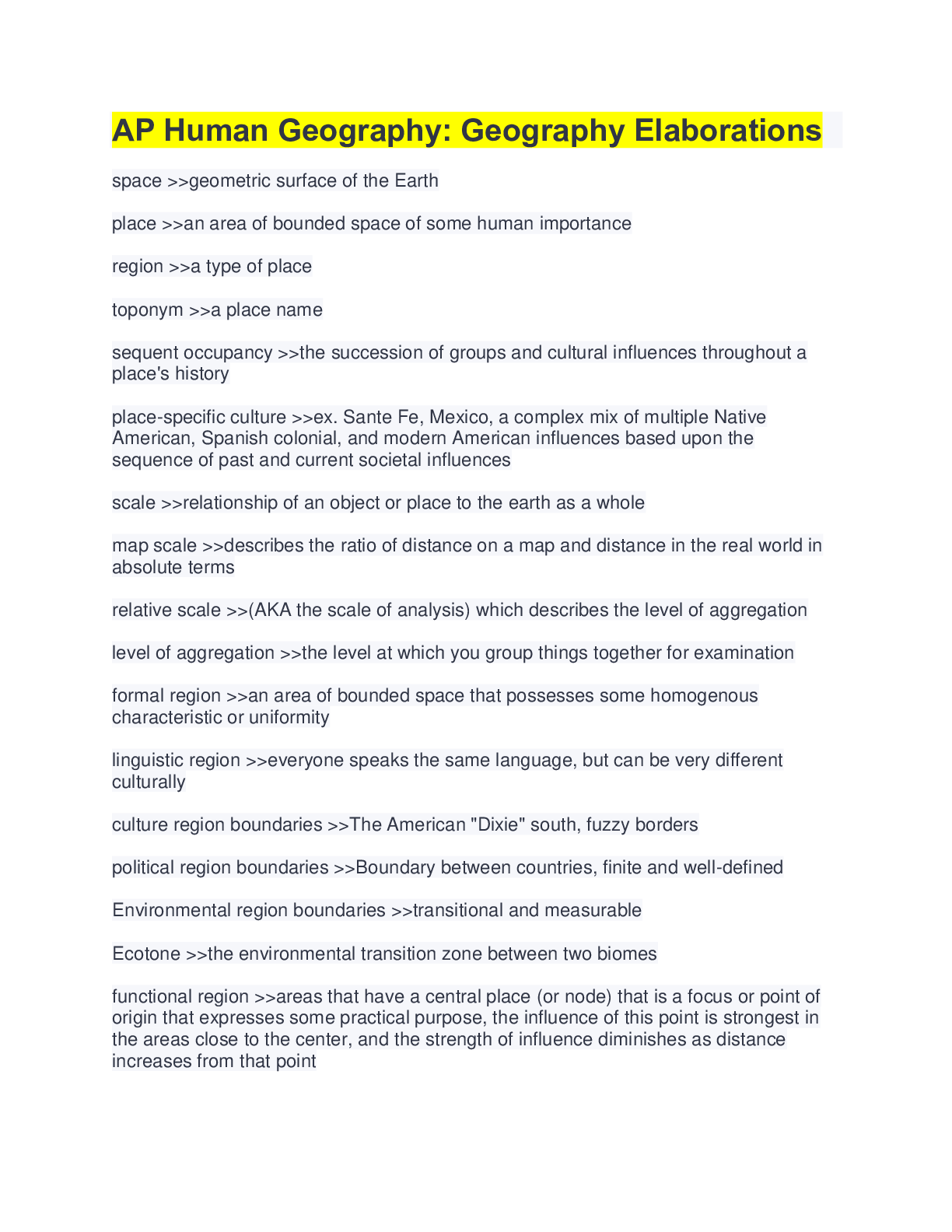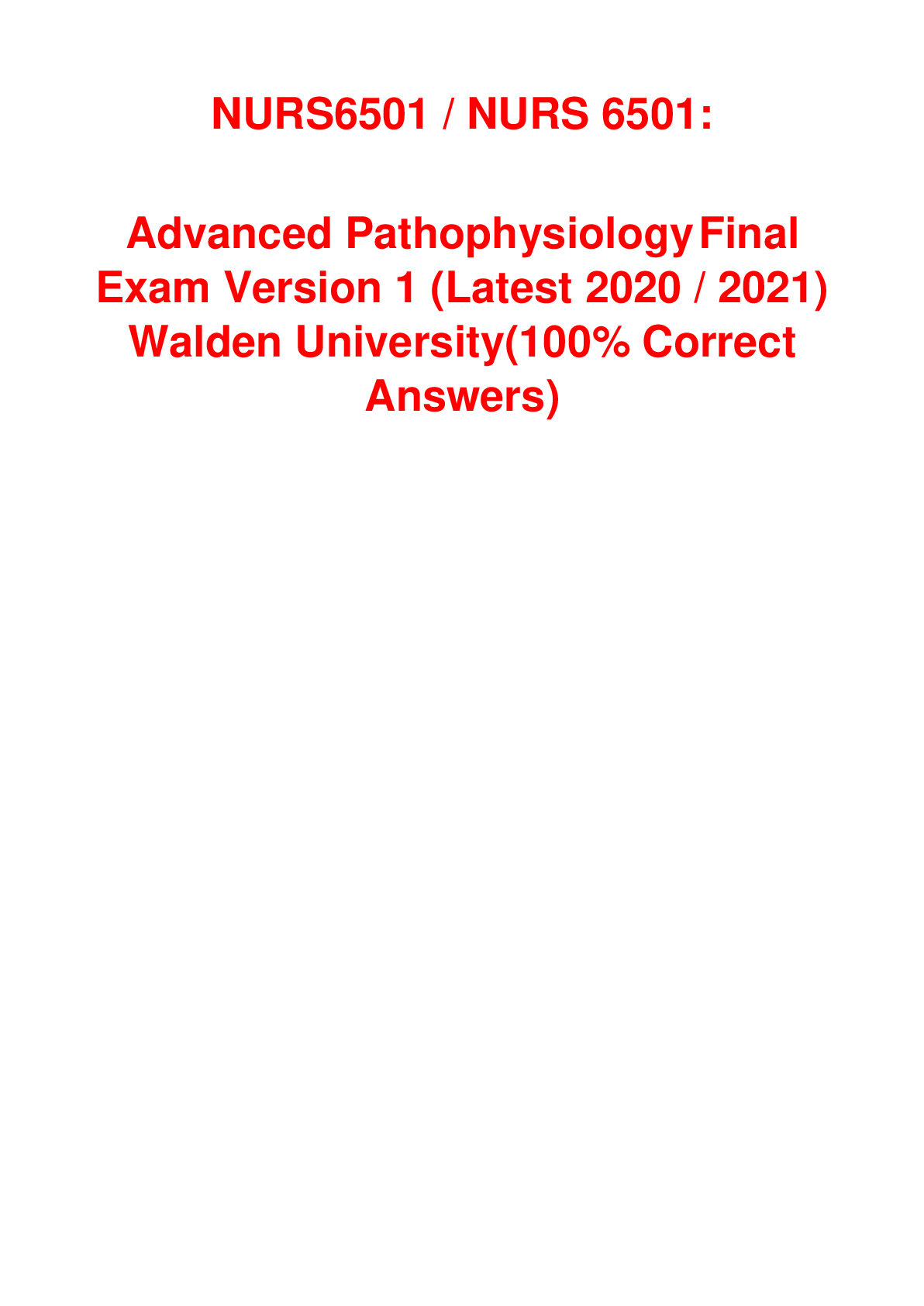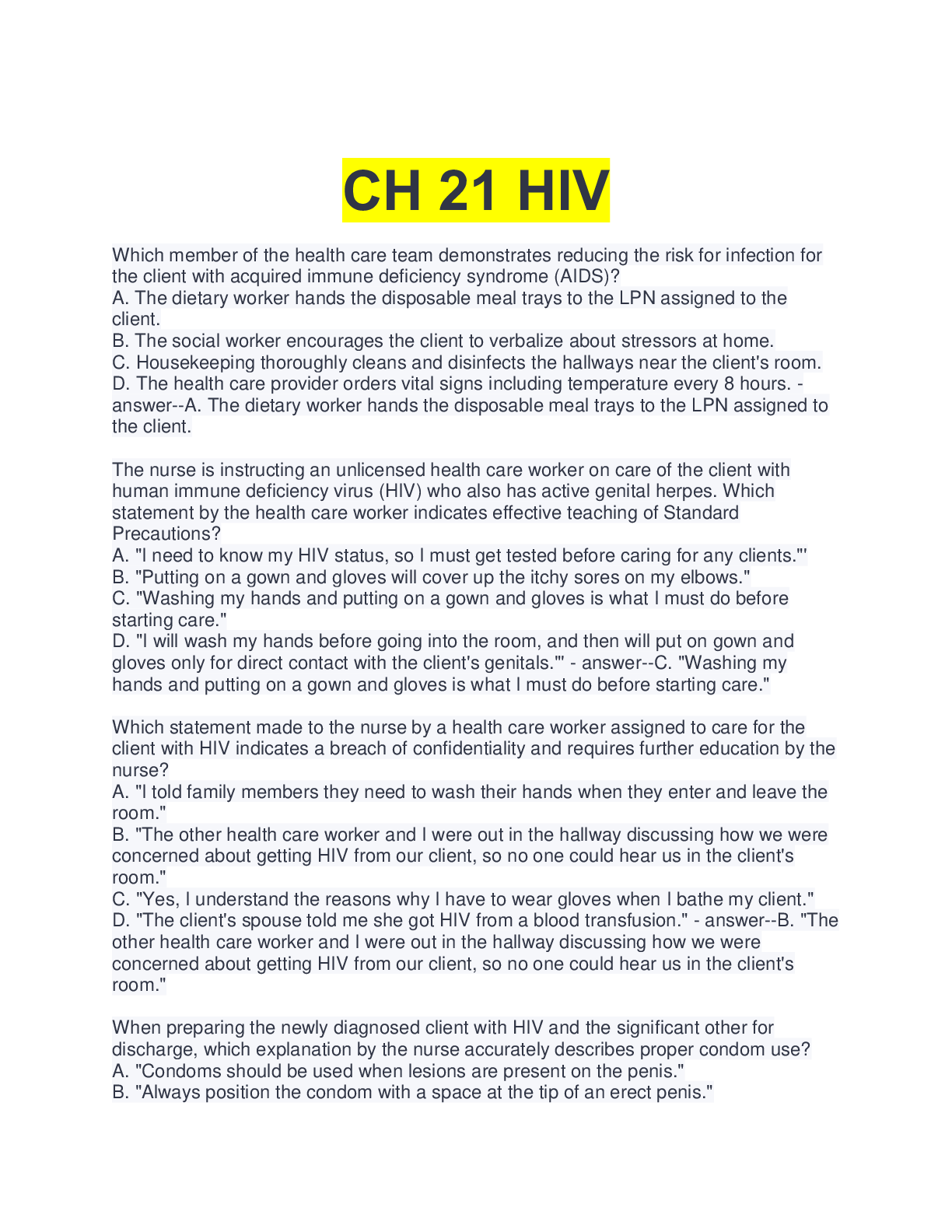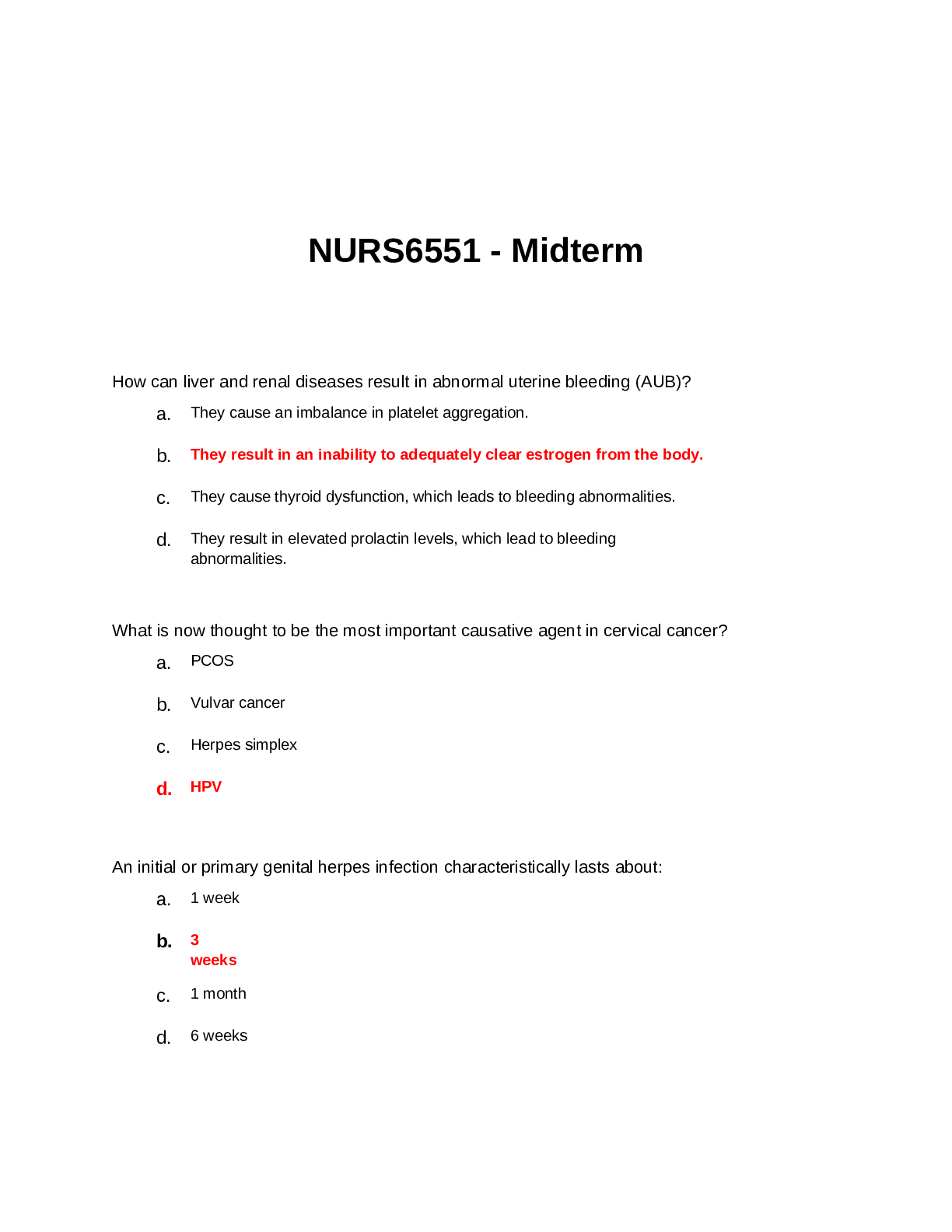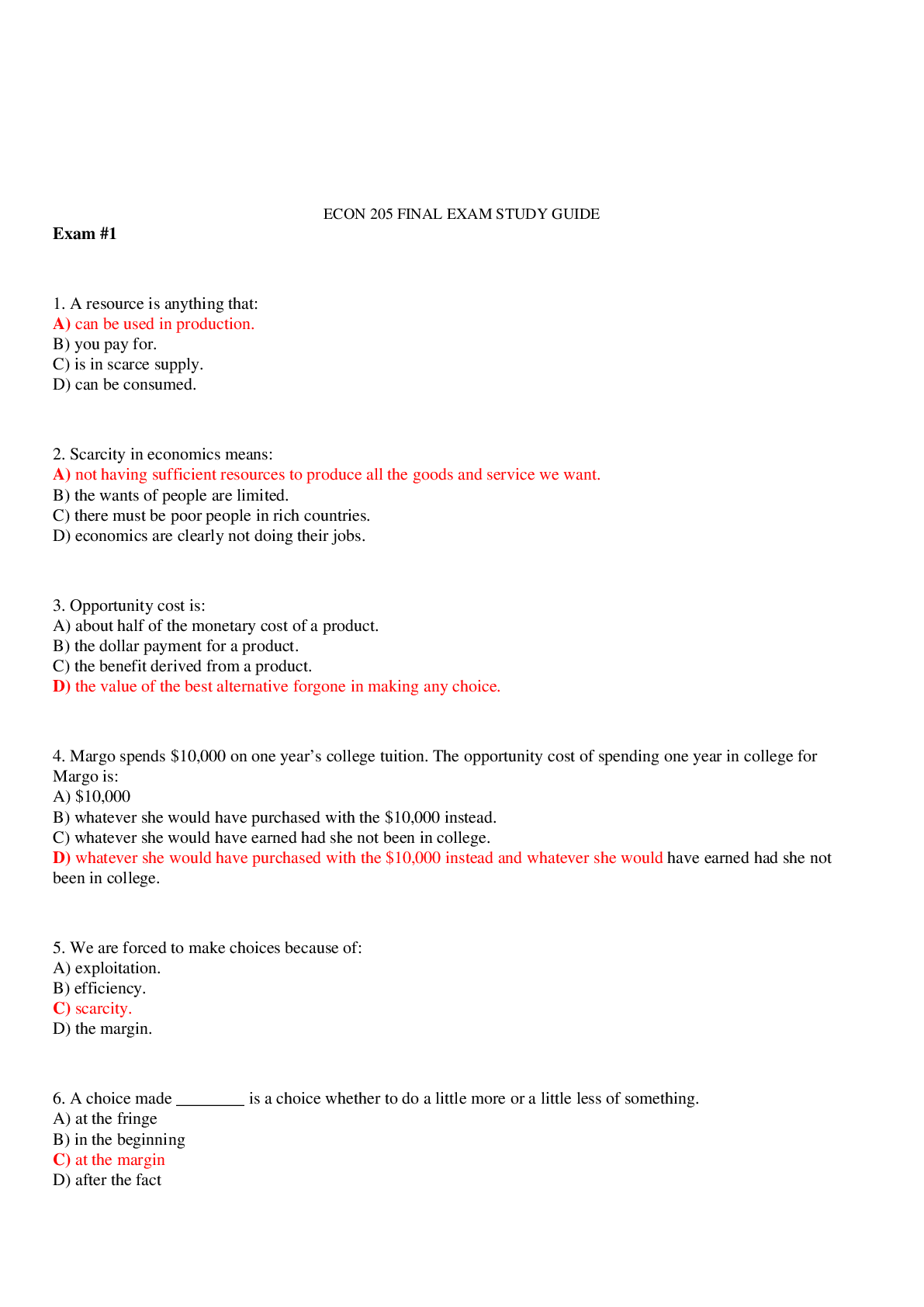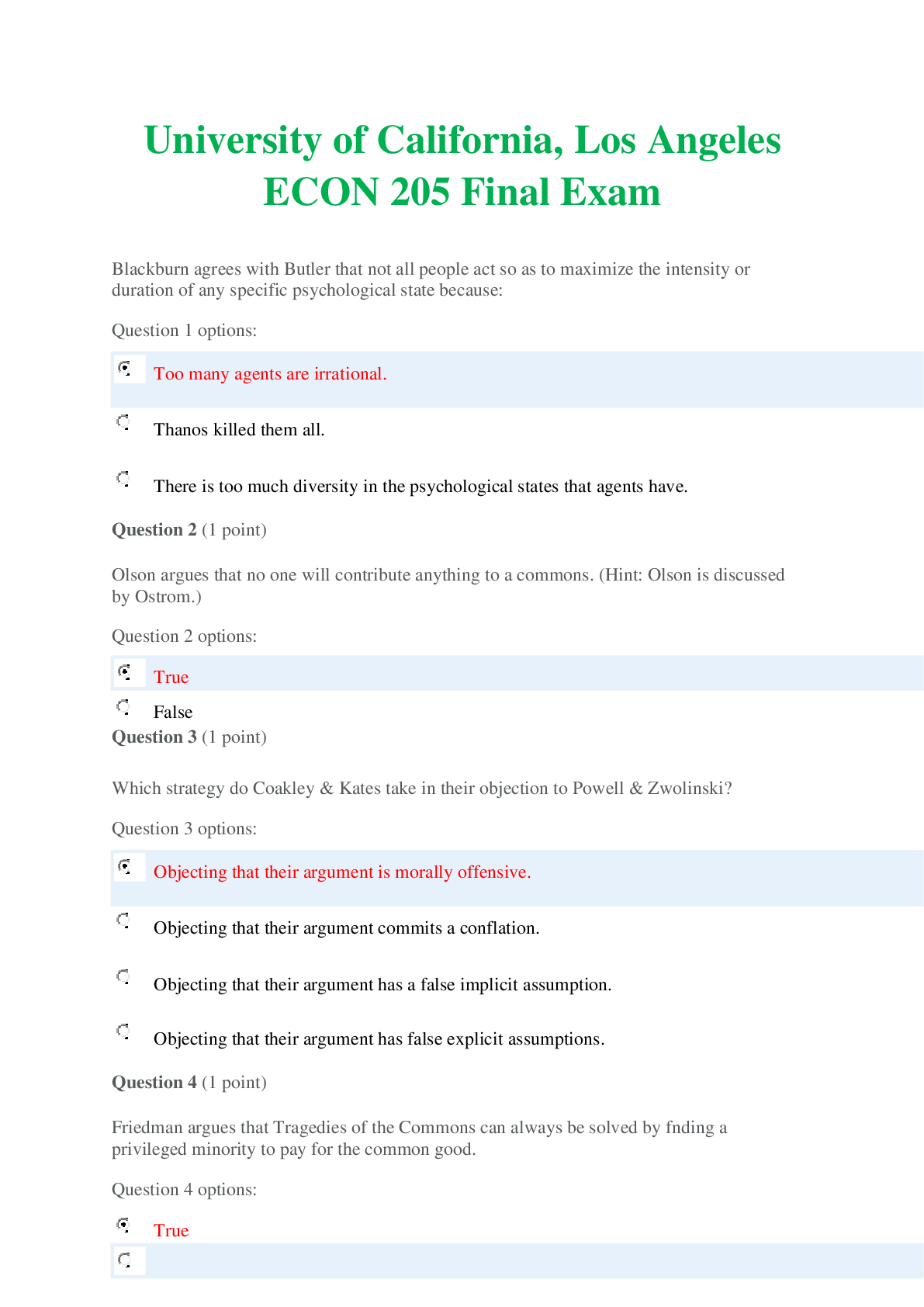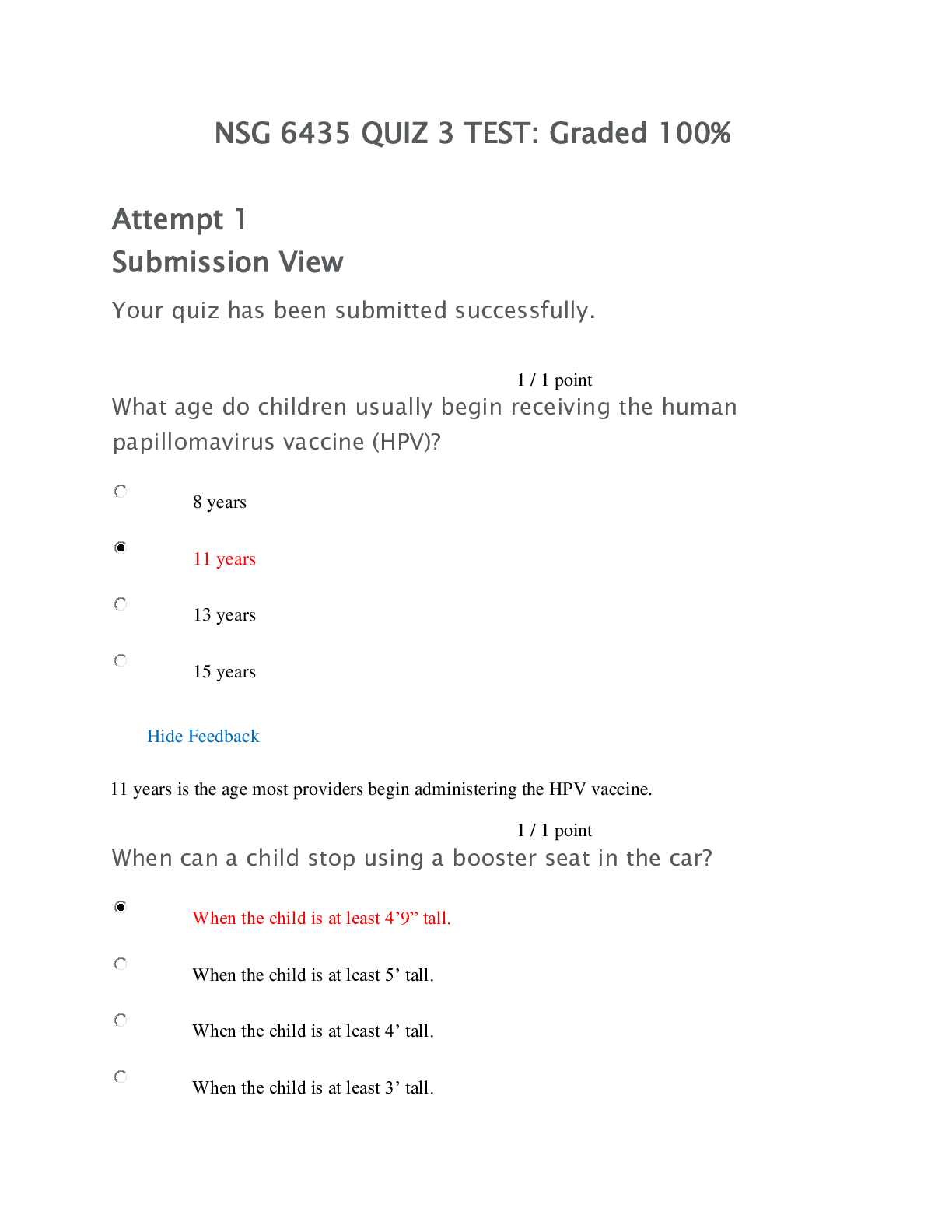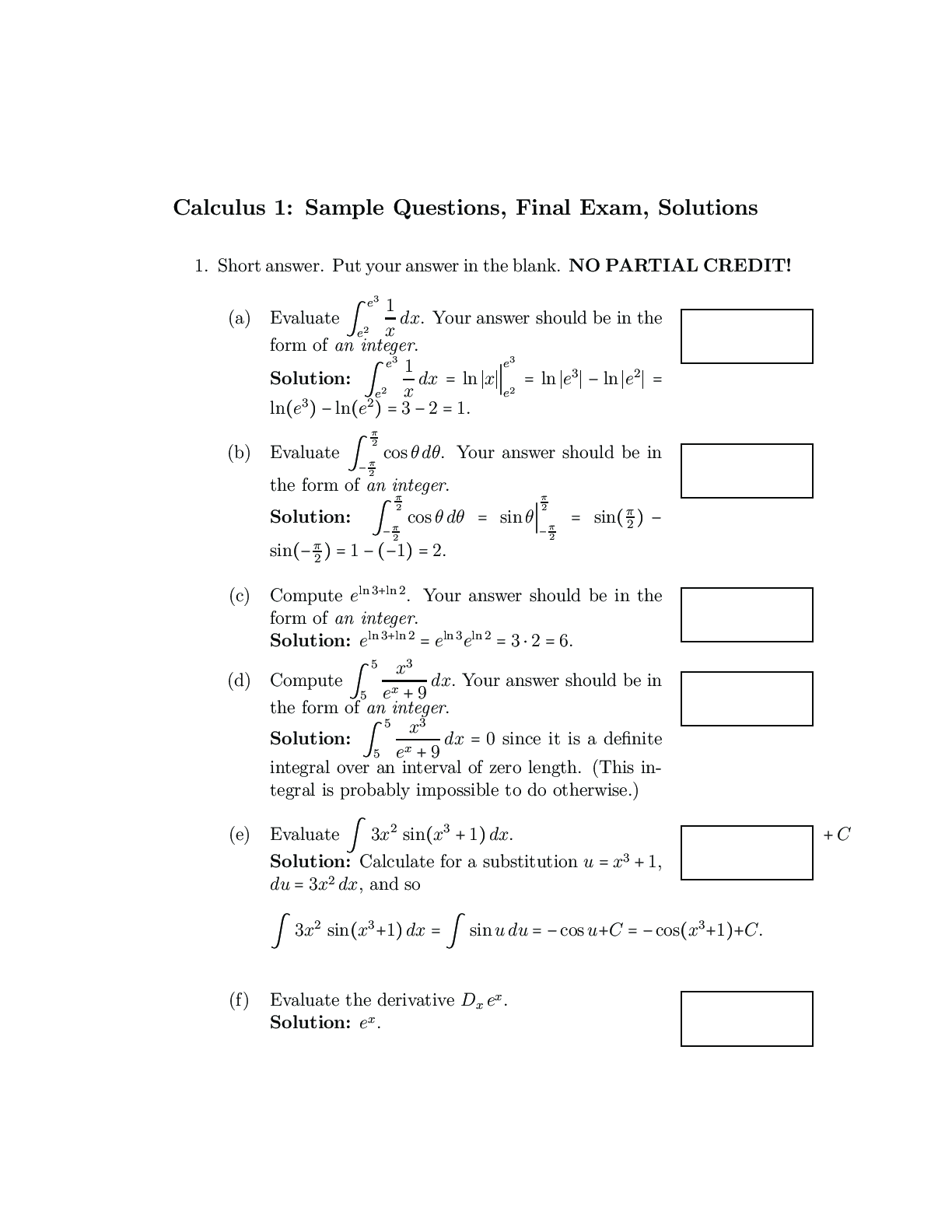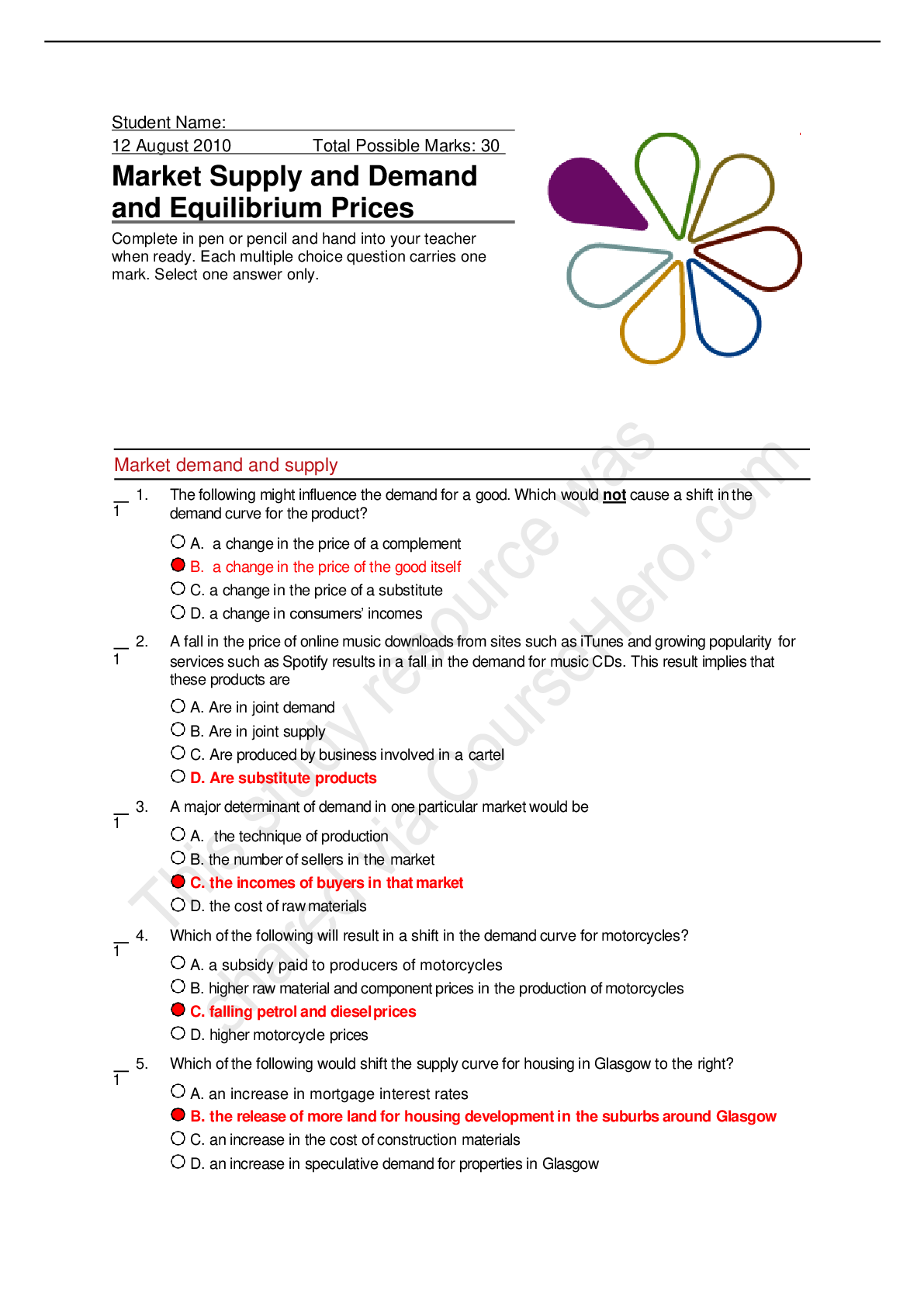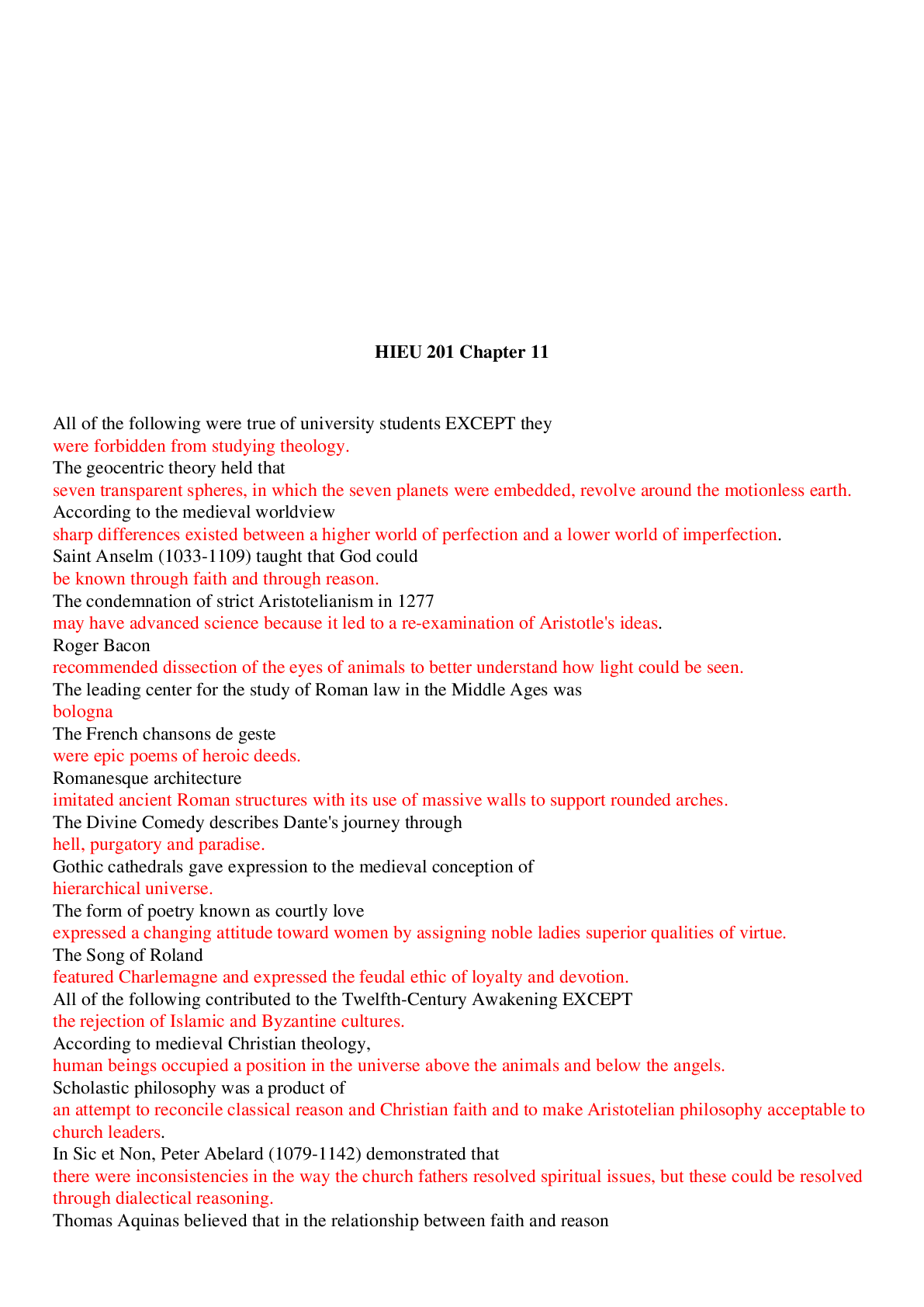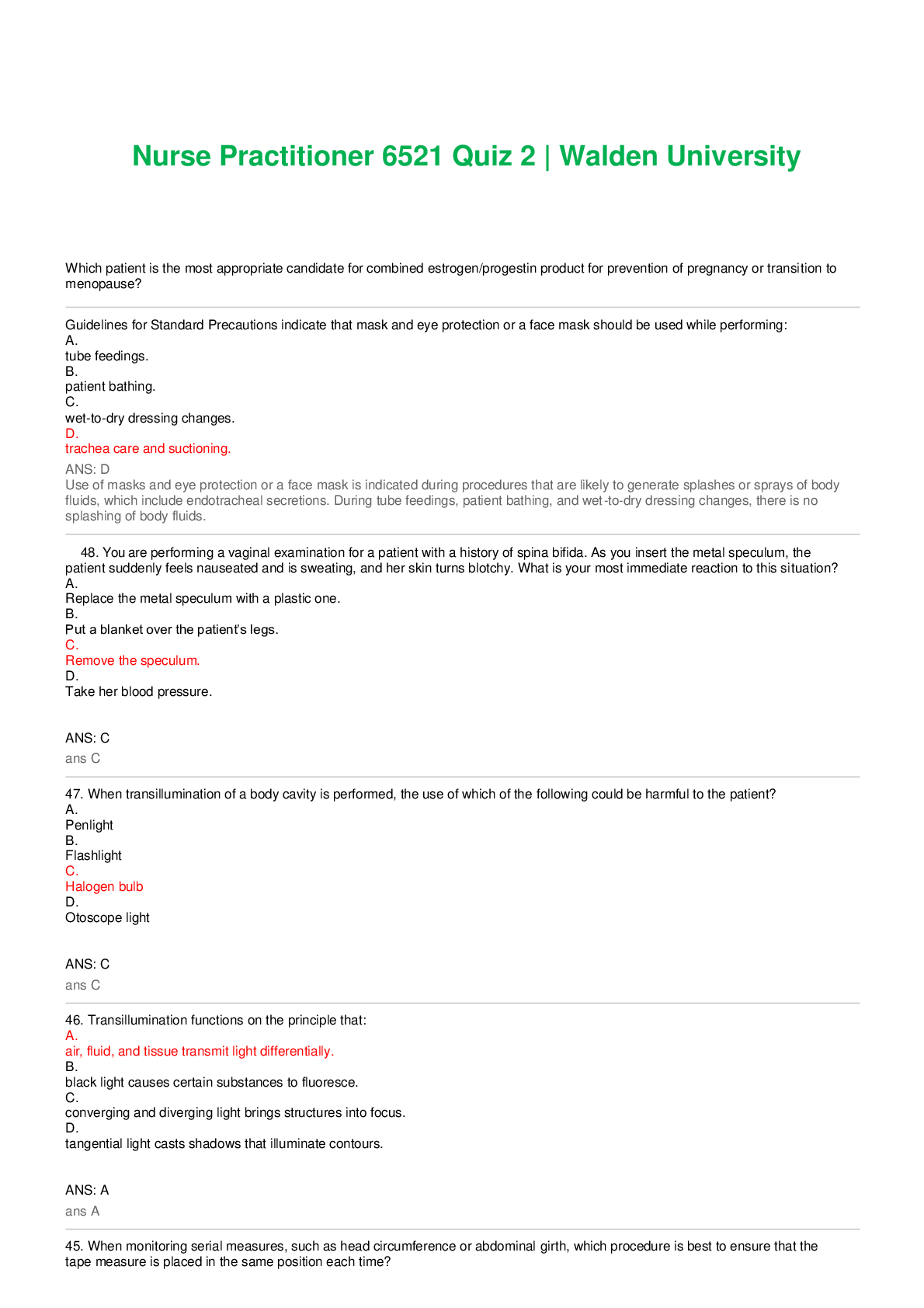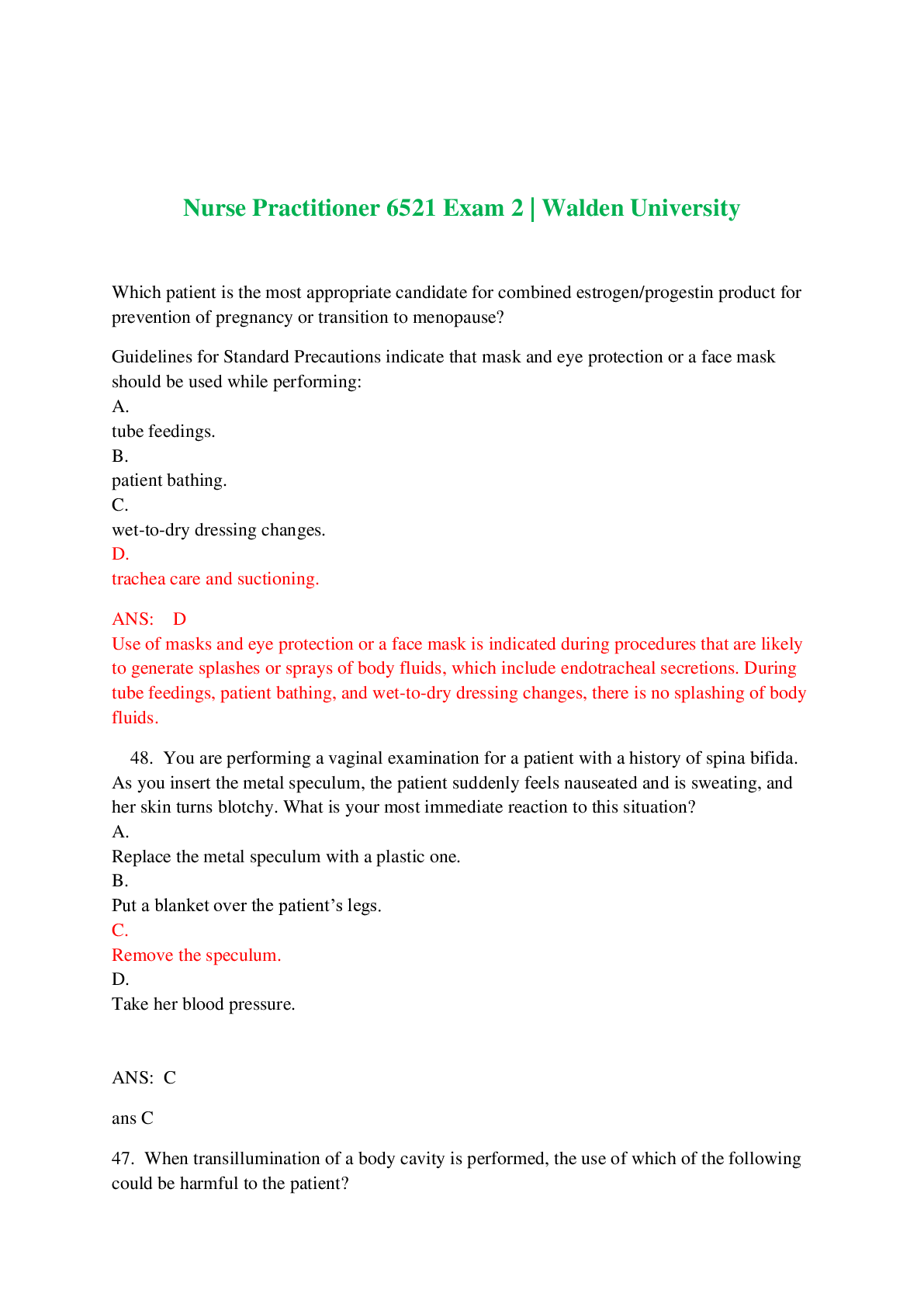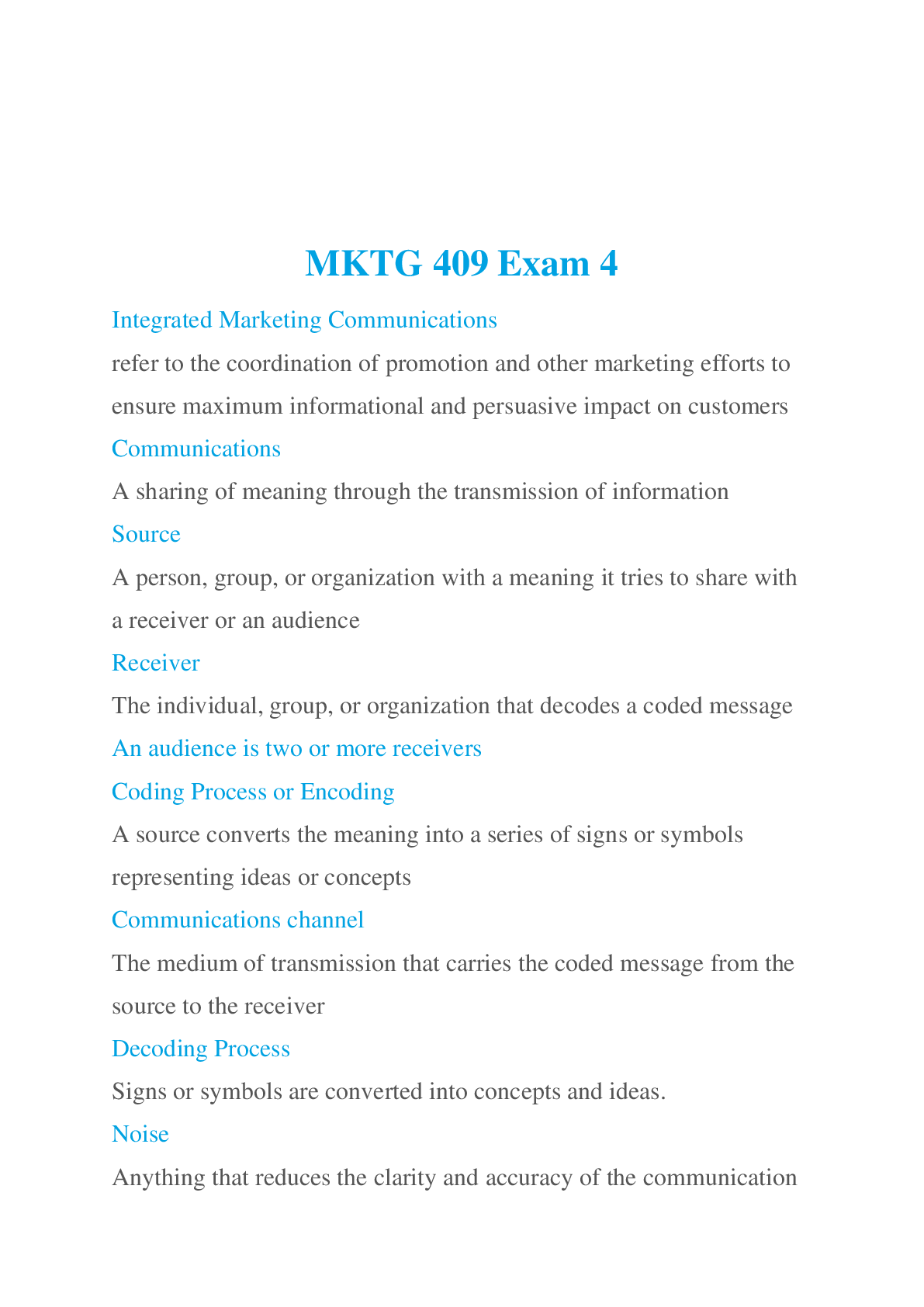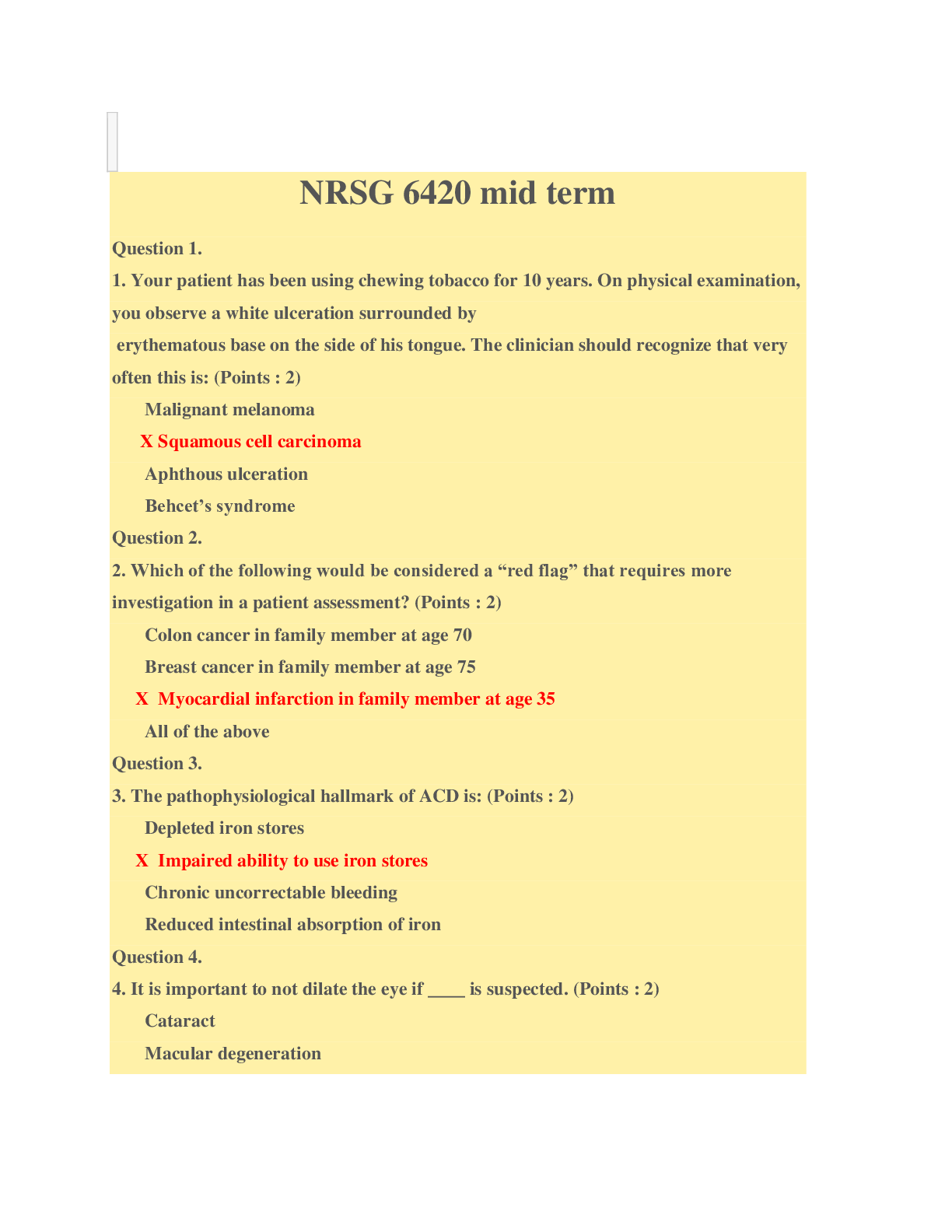Physics
Document Content and Description Below
TNCC Notes for Written Exam What is kinematics? - answer--A branch of mechanics (energy transfer) that refers to motion and does not consider the concepts of force and mass of the object or body. ... What is Newton's First Law? - answer--A body at rest will remain at rest. A body in motion will remain in motion until acted on by an outside force. What is the Law of Conservation of Energy? - answer--Energy can neither be created nor destroyed. It is only changed from one form to another. What is Newton's Second Law? - answer--Force equals mass multiplied by acceleration of deceleration. What is kinetic energy (KE)? - answer--KE equals 1/2 the mass (M) multiplied by the velocity squared. What is the Mnemonic for the Initial Assessment? - answer--A = Airway with simultaneous cervical spine protection B = Breathing C = Circulation D = Disability (neurologic status) E = Expose/Environmental controls (remove clothing and keep the patient warm) What is the Mnemonic for the Secondary Assessment? - answer--F = Full set of VS/Focused adjuncts (includes cardiac monitor, urinary catheter, and gastric tube)/Family presence G = Give comfort measures (verbal reassurance, touch, and pharmacologic and nonpharmacologic management of pain). H = Hx and Head-to-toe assessment I = Inspect posterior surfaces Where do you listen to auscultate breath sounds? - answer--Auscultate the lungs bilaterally at the second intercostal space midclavicular line and at the fifth intercostal space at the anterior axillary line. What are the late signs of breathing compromise? - answer--- Tracheal deviation - JVD What are signs of ineffective breathing? - answer--- AMS - Cyanosis, especially around the mouth - Asymmetric expansion of chest wall - Paradoxical movement of the chest wall during inspiration and expiration - Use of accessory muscles or abdominal muscles or both or diaphragmatic breathing - Sucking chest wounds - Absent or diminished breath sounds - Administer O2 via NRB or assist ventilations with a bag-mask device, as indicated - Anticipate definitive airway management to support ventilation. Upon initial assessment, what type of oxygen should be used for a pt breathing effectively? - answer--A tight-fitting nonrebreather mask at 12-15 lpm. What intervention should be done if a pt presents with effective circulation? - answer--- Insert 2 large caliber IV's - Administer warmed isotonic crystalloid solution at an appropriate rate What are signs of ineffective circulation? - answer--- Tachycardia - AMS - Uncontrolled external bleeding - Pale, cool, moist skin - Distended or abnormally flattened external jugular veins - Distant heart sounds What are the interventions for Effective/Ineffective Circulation? - answer--- Control any uncontrolled external bleeding by: - Applying direct pressure over bleeding site - Elevating bleeding extremity - Applying pressure over arterial pressure points - Using tourniquet (last resort). - Cannulate 2 large-caliber IV's and initiate infusions of an isotonic crystalloid solution - Use warmed solution - Use pressure bags to increase speed of IVF infusion - Use blood administration tubing for possible administration of blood - Use rapid infusion device based on protocol - Use NS 0.9% in same tubing as blood product - IV = surgical cut-down, central line, or both. - Blood sample to determine ABO and Rh group - IO in sternum, legs, arms or pelvis - Administer blood products - PASG (without interfering with fluid resuscitation) [Show More]
Last updated: 2 years ago
Preview 1 out of 23 pages

Buy this document to get the full access instantly
Instant Download Access after purchase
Buy NowInstant download
We Accept:

Reviews( 0 )
$10.00
Can't find what you want? Try our AI powered Search
Document information
Connected school, study & course
About the document
Uploaded On
Sep 26, 2022
Number of pages
23
Written in
Additional information
This document has been written for:
Uploaded
Sep 26, 2022
Downloads
0
Views
46

